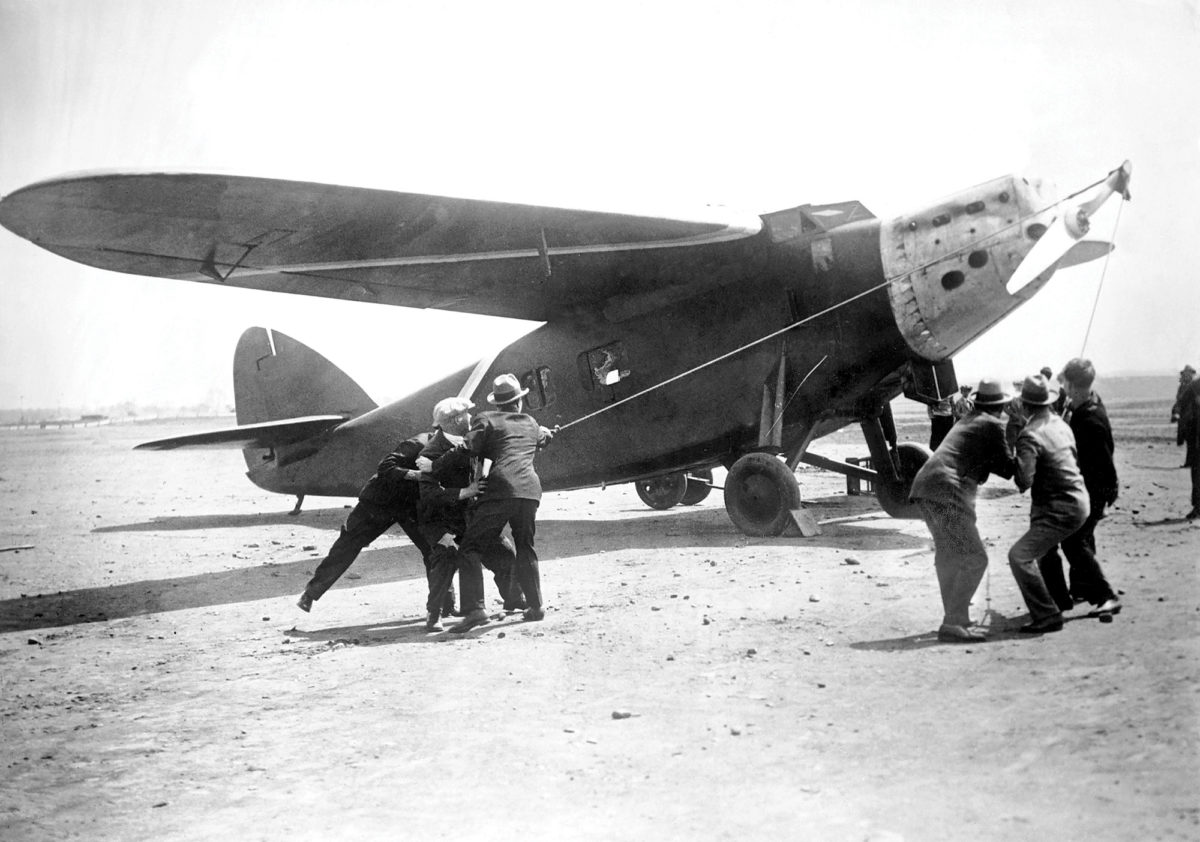It was billed as the First Transatlantic Airplane Race—a contest in the clouds between the French Oiseau Canari (dubbed Yellow Bird by the U.S. press) and the American Green Flash. To Armand Lotti, the visionary behind the Yellow Bird challenge, it was more than that. Lotti touted the June 13, 1929, flight as a tribute to Charles Lindbergh, who two years earlier had inspired not only Lotti but the entire world with his solo flight across the Atlantic. The Frenchman intended to honor the achievement with a daring deed of his own. He even stocked the Yellow Bird with bootleg whiskey to toast the arrival of the first French crew to go the distance.
With two finish lines, the First Transatlantic Airplane Race was a race in name only. Green Flash was destined for Rome, while the Yellow Bird would make for Paris. The media played up the event as a joust between nations.
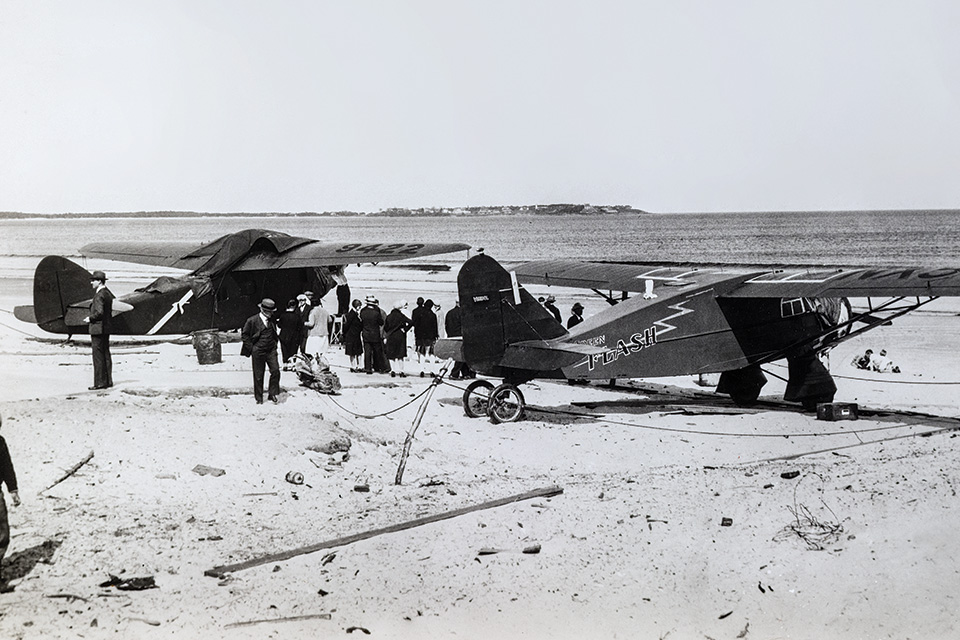
Born in 1897 to an Italian father and French mother, Armand Lotti was raised in an affluent home. Lotti senior, a prominent hotelier in Paris, sent his son to boarding schools throughout Europe, intending that the boy absorb all the learning and culture he could. Armand became fluent in seven languages, demonstrating the confidence and drive his father expected in a student of the world. At various stages of his life Armand was a hotelier, vintner, watercolorist, businessman, author, soldier and collaborator with the French Resistance in Algeria during World War II. But these later pursuits took second billing to his fierce desire to fly.
As a young man Lotti lost an eye during a hunting accident. With it he lost his dignity and self-worth. Lotti chose therapy that promised to lift him out of the doldrums, figuratively and literally: He would learn to fly. Knowing his family would disapprove, he secretly enrolled at the Aerodrome Louis Blériot, a flying school near Paris founded by the pioneering French pilot. He told his parents he was taking an exercise class. Although he excelled in flight preparation, his impaired vision dashed all hopes for a pilot’s license.
Nevertheless, Lotti would soar. A milliner who operated a hat shop near the Hotel Lotti introduced the aspiring pilot to Joseph Le Brix. An aviation trailblazer, Le Brix had completed the first nonstop aerial crossing of the South Atlantic in October 1927, flying from Senegal to Brazil with pilot Dieudonné Costes during a journey around the world. Lotti learned all he could about aviation from Le Brix and envisioned himself flying across the North Atlantic with him at the controls.
In 1928 Lotti parlayed his personal savings with the insurance money from his hunting accident and bought an airplane. He paid 300,000 francs for a Bernard-Hubert 191GR wooden high-wing monoplane—one of only three built. The plane’s engine closed the deal. At 599 horsepower, the Hispano-Suiza 12Lb aluminum V-12 was lighter and more powerful than the Gnome-Rhône 9Ady engines sold with earlier model Bernard-Huberts. Christening it L’Oiseau Canari, Lotti refitted the aircraft to carry approximately 1,150 gallons of fuel and bought a radio transmitter.
Lotti contacted Le Brix with the good news, proposing that he pilot the Bernard-Hubert in a North Atlantic crossing. Le Brix politely declined, telling him he’d made other plans. Disheartened, Lotti rented a hangar at the Orly airfield and locked the Yellow Bird inside. He returned to the family hotel business in Paris, but his self-imposed exile didn’t last long.
The hat maker came through again, introducing Lotti to Jean Assollant, a former French military pilot. Assollant agreed to pilot Lotti’s plane and wooed René Lefèvre, another military veteran, to serve as navigator. The trio soon embarked on a 2,000-mile proving flight across Europe to debug the Yellow Bird.
Then the French government lowered the boom. An edict to the nation’s would-be daredevils in early 1929 banned all transatlantic flight attempts. “Trop dangereux,” it read, and with good reason. From 1927 to 1929, 48 attempts had been made to cross the Atlantic, claiming 50 lives. The fallen aviators were among the cream of Europe’s World War I pilots.
While government officials could halt transatlantic attempts originating on French soil, they were powerless if pilots left from Africa. Lotti plotted a course from Casablanca in Morocco, south to Senegal and west across the Atlantic to South America. The attempt ended in failure due to mechanical problems, and the French press lit into him, but Lotti was undeterred. He resolved that he, Assollant and Lefèvre would be the first Frenchmen to fly nonstop from North America to Europe, conceding that the flight would be made west to east.
The trio flew the Yellow Bird to Southampton, England, took it apart and shipped it in pieces aboard SS Leviathan to Roosevelt Field on Long Island. After reassembling the aircraft, the crew began flight trials and quickly discovered the Yellow Bird was not performing up to expectations. A pair of French mechanics determined that the American fuel mixture was inadequate for the Hispano-Suiza engine. They contacted the Wright Motor Company in New York and formulated three distinct fuel mixtures to maximize horsepower and compression: one for takeoff and climbing, another for distance flying over open water and a third for optimal performance during descent and landing. That done, the French team headed north to a strip of sand in Maine.
A level ribbon of shoreline, Old Orchard Beach was a better option for the Yellow Bird than Roosevelt Field. The sand was firm and the natural runway long enough for a bigger plane laden with fuel. Lotti met Charles Lindbergh and Clarence Chamberlin (the first pilot to fly the Atlantic with a passenger) at dinner in the seaside village. In his memoirs the Frenchman confided that the advice Lindbergh imparted that night saved his life during the crossing.
Chosen to go first on the morning of June 13, the French crew sensed something was wrong before the Yellow Bird was airborne. The plane was skimming the strand “heavy,” but the Mainers who had turned out in droves to watch didn’t know it. With NBC broadcasting nationwide over 140 radio stations, the Yellow Bird grudgingly rose and veered seaward, barely clearing the breakwater. The American Green Flash was next. Crewed by Roger Williams and Lewis Yancey, the Bellanca J monoplane crashed on takeoff, breaking a wheel and nosing over on the sand.
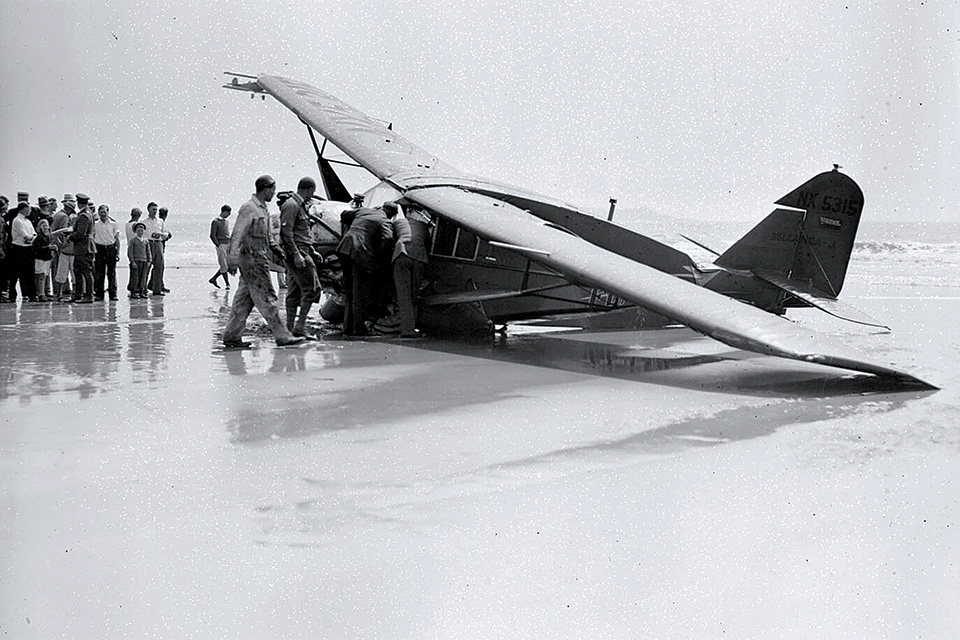
Approximately 20 minutes into the flight Lotti noticed a pair of shoes poking from the rear fuselage. The shoes had feet in them. Blurting, “Here I am,” the stowaway introduced himself to the flabbergasted crew.
Arthur Schreiber, a 22-year-old from Portland, had crawled aboard the Yellow Bird minutes before takeoff. Onlookers saw it happen but thought he was part of the crew. Schreiber had left a cheery note for his parents, telling them he was off to Europe on the Green Flash airship, and what better way to get there for a young man who was broke? Regret at not being able to squeeze into the tail of the smaller Green Flash turned to relief when Schreiber learned that the American plane had crashed on takeoff.
Lotti’s meticulous planning had never included the possibility of an interloper. He had no contingencies for the additional weight of a passenger, nor did he have any interest in a four-way split of the glory and profits from a successful flight.
Lotti and his crew deliberated the fate of l’opportuniste américain in a midair tribunal. Lefèvre motioned to throw Schreiber off the plane. They’d fly low, push him out and radio for rescue. Lotti nixed the idea. “We’re all Christians,” he said, noting that there were no parachutes aboard the Yellow Bird. Murder wasn’t part of the plan.
The crew debated the conundrum for an hour, opting in the end for leniency. They opened the Yellow Bird’s fuselage door and jettisoned the stowaway’s equivalent weight in whiskey, fur coats and provisions. Somewhere over the Atlantic Lotti had Schreiber sign a make-do contract, written in barograph plotting ink with a matchstick on a piece of scrap paper, renouncing all monetary gain from the Yellow Bird flight. The contract forbade the stowaway from accepting press interviews unless cleared by Lotti himself. Schreiber also waived his rights to claim personal injury and signed with the matchstick. The men exchanged a dollar bill to seal the deal.
The Yellow Bird had risen from Old Orchard Beach into black skies that turned miserable over the Atlantic. Lotti broadcasted the plane’s position every 30 minutes using Morse code, never certain that anyone was receiving his dispatches. He recalled Lindbergh’s warning to fly low into warmer air if icing on the wings became an issue. It was this advice that averted catastrophe.
They flew by compass at 800 feet, and they were lost. The cloud pack was so thick, so visually impenetrable, that the crew decided to change course southward toward the Azores, hoping to sight the islands and recalibrate their position. They never did. In a tempest so turbulent that Assollant had to belt himself to the seat in order to control the plane, they flew past the Azores. They paid for it in fuel consumption.
Lefèvre plotted the shortest route to the French border, convincing Lotti they couldn’t make Paris. Assollant concurred and switched to the reserve tank. He took the Yellow Bird low over churning whitecaps toward the Iberian Peninsula. Twenty-nine hours and 52 minutes after takeoff, at 8:40 p.m. local time on June 14, the Yellow Bird’s wheels bounced on Oyambre Beach near the seaside town of Comillas, its fuel tanks empty. The crew reckoned they’d landed short of French soil, which was confirmed when gawkers greeted them in Spanish.
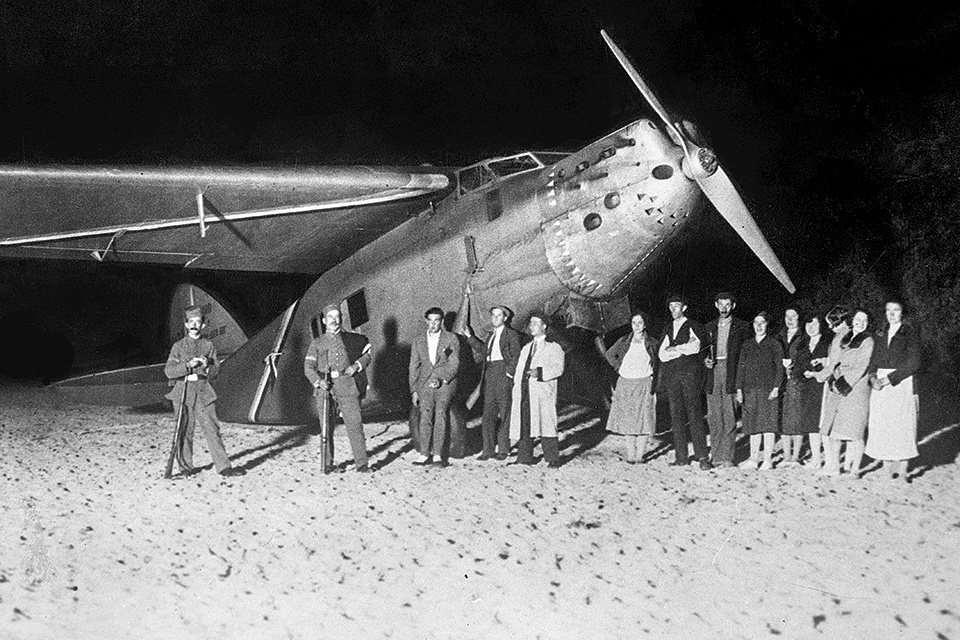
Eventually a crowd formed, shaking the crew’s hands, slapping backs and offering refreshments. The locals signed the Yellow Bird’s wings and the mayor showed up with the town orchestra in tow. The first song they played was the French national anthem, “Le Marseillaise.” With the Bay of Biscay as backdrop, the Spaniards danced on the sand, coaxing the aviators to join in. The best dancer among them was Schreiber, the American stowaway, and the locals couldn’t get enough of him.
France’s aviation minister wired his congratulations, urging the French trio to get to Paris as soon as possible. But the press glommed onto Schreiber, giving him equal billing and turning the threesome into a quartet. One American newspaper offered the stowaway $11,000 for his firsthand account, a minor fortune at the time. Schreiber honored his matchstick contract and refused. Nevertheless, Lotti realized that he had to introduce the American freeloader at each press event. It wasn’t long before he referred to Schreiber as his friend.
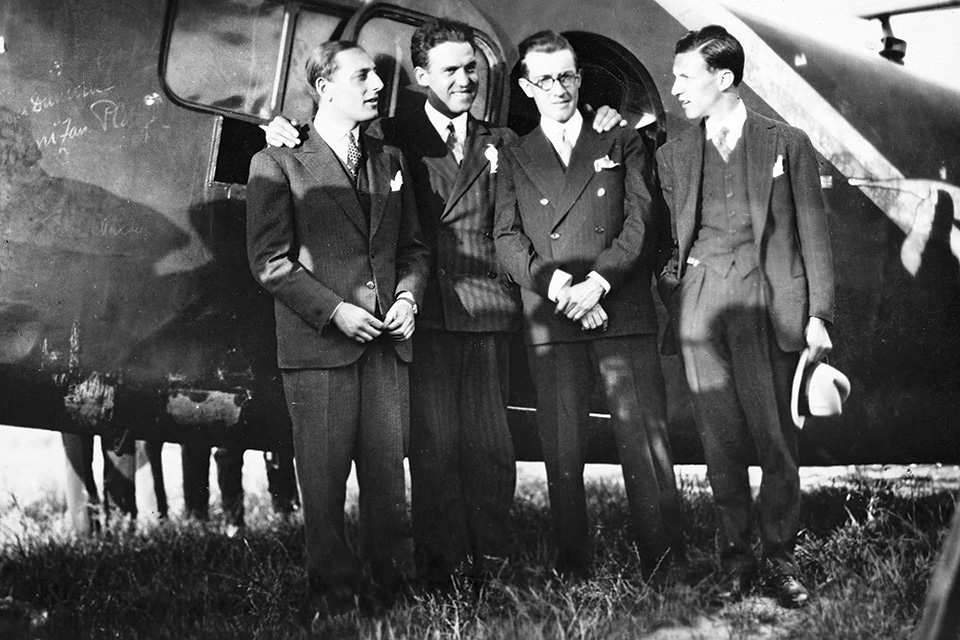
After engine repairs and partial refueling (Oyambre Beach was too soft and too short for a fully fueled takeoff), the Yellow Bird departed at 9:30 a.m. on June 16. Mechanical problems required an additional stop at Mimizan-Les-Bains in southwestern France. Nevertheless, Lotti was exuberant. He was back on native soil, his mission completed. The crewmen went to Sunday Mass in Mimizan, topped off the tanks at a nearby military base and took off for Paris at 5:50 that afternoon.
The Yellow Bird touched down at Le Bourget at 8:47 p.m. on June 16. Ecstatic Parisians greeted the arrival in crowds so massive that mounted gendarmes had to restrain them. Dignitaries celebrated the crewmen and stowaway in a formal reception while the Yellow Bird was displayed in the Tuileries Gardens. Lotti put Schreiber up in his father’s hotel, free of charge.
A few days later the French government began shooting a film documenting the flight. In it Lotti lauded Assollant and Lefèvre as outstanding aviators and brothers, and described Schreiber as “a good American boy.” He told the New York Times that Schreiber made himself useful on the flight and “now we count him as one of us.” The U.S. ambassador to France, however, had a different reaction to Schreiber’s adventure. He called the stowaway a criminal and demanded deportation back to the States. While a newspaper syndicate claimed to have paid for Schreiber’s voyage home, Lotti’s American granddaughters Emily Brown and Jessica Blischok maintain that their grandfather was adamant about paying the young man’s passage himself.
Lotti, Assollant and Lefèvre were now famous, especially in France, where they each received the Légion d’Honneur. They were the star attractions in a grand tour of European capitals that began in Madrid. Coins were minted with their likenesses, songs written about them. Comillas and Mimizan dedicated monuments in their honor, and Old Orchard Beach named streets for them.
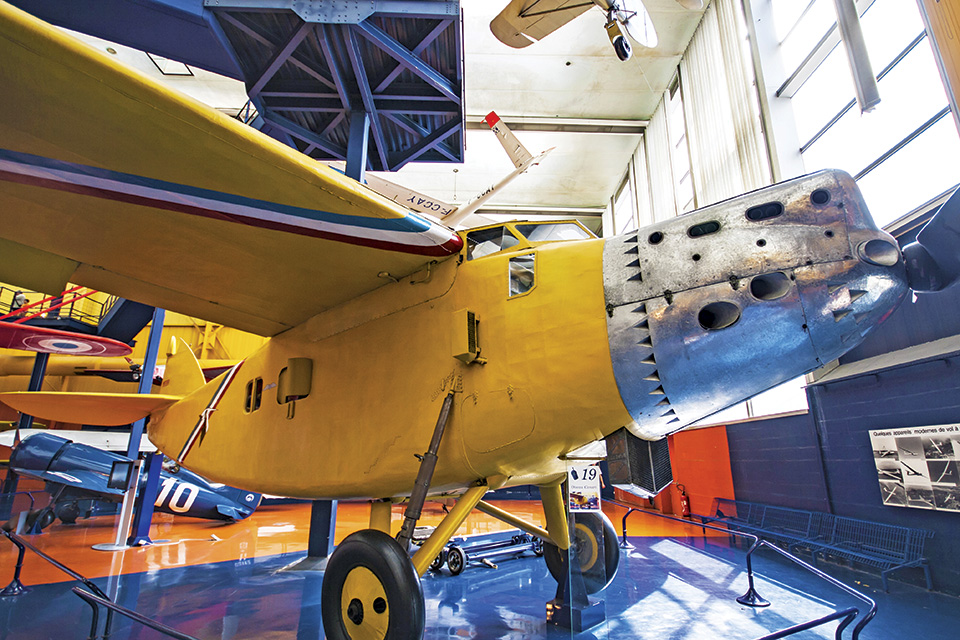
In 1932 the French government purchased the Yellow Bird from Lotti and enshrined it in the Musée de l’Air, now located at Paris–Le Bourget Airport, where it resides today. In 1989, during the 60th anniversary celebration of the famous flight, France awarded the 92-year-old Lotti an honorary pilot’s license. During his lifetime he’d befriended many aviation legends, including Lindbergh, Chamberlin, Orville Wright, Amelia Earhart, Ruth Elder and Yuri Gagarin. He and Arthur Schreiber remained lifelong friends, Schreiber never profiting from the Yellow Bird flight as he had promised. Lotti died in 1993 and was buried at sea.
Now more than 90 years after it happened, the flight of the Yellow Bird is largely forgotten. But in terms of aviation achievements it remains important. It marked the first time a French crew piloted a plane nonstop between North America and Europe. The 11th transatlantic crossing, it set a record for fastest average speed, 105 mph, and longest distance traveled over open ocean, 3,128 miles. A true oddity in aviation history, it will perhaps be most remembered as the first flight across the pond with a stowaway on board.
Bill Dantini is a career writer, having worked as a publicist, journalist, scriptwriter and novelist. He lives in Raleigh, N.C., and volunteers his time at the VA hospital in Durham, where he composes biographies for convalescing military veterans. Armand Lotti’s 1967 account of his flight, L’Oiseau Canari, is only available in French.
This feature originally appeared in there July 2020 issue of Aviation History. To subscribe, click here!

